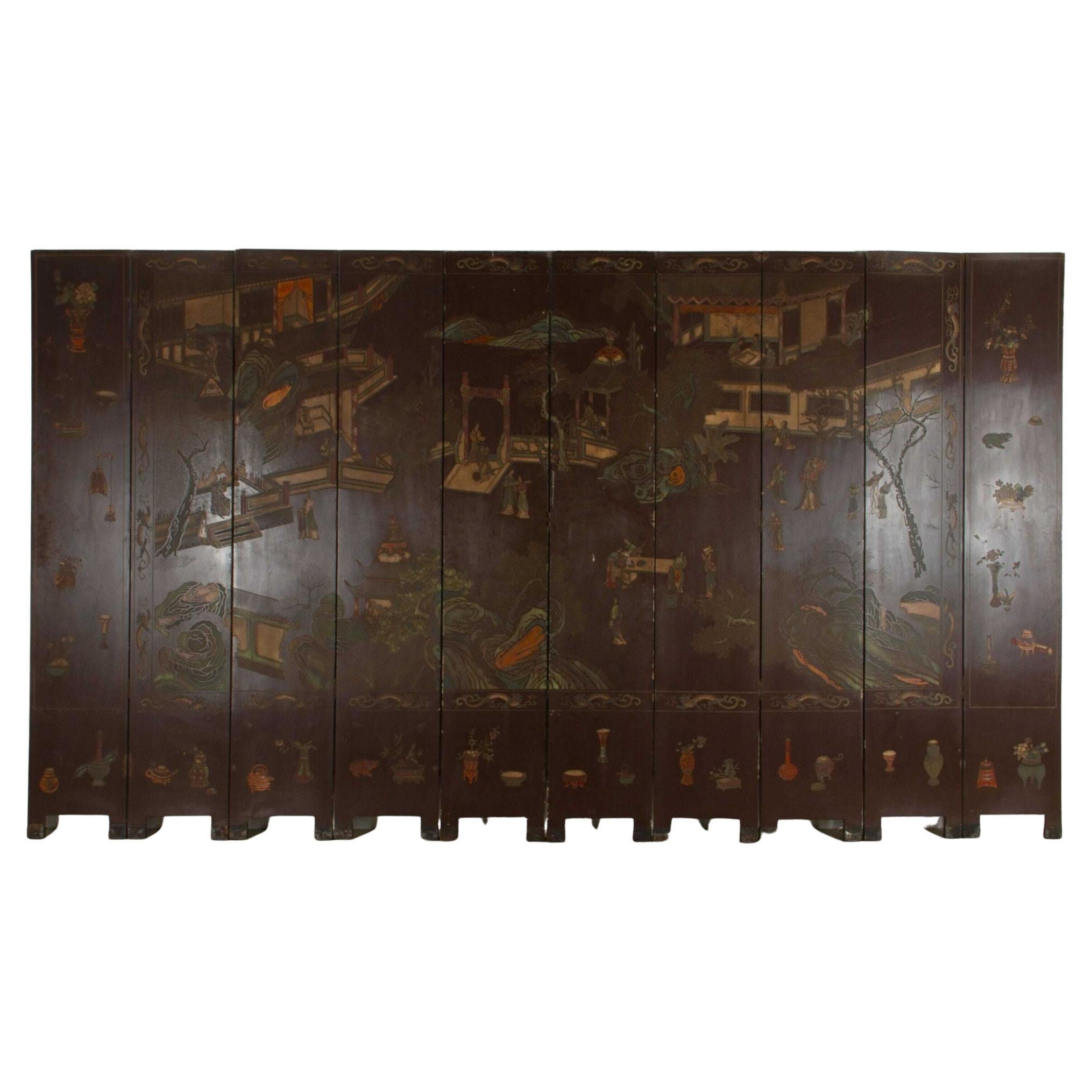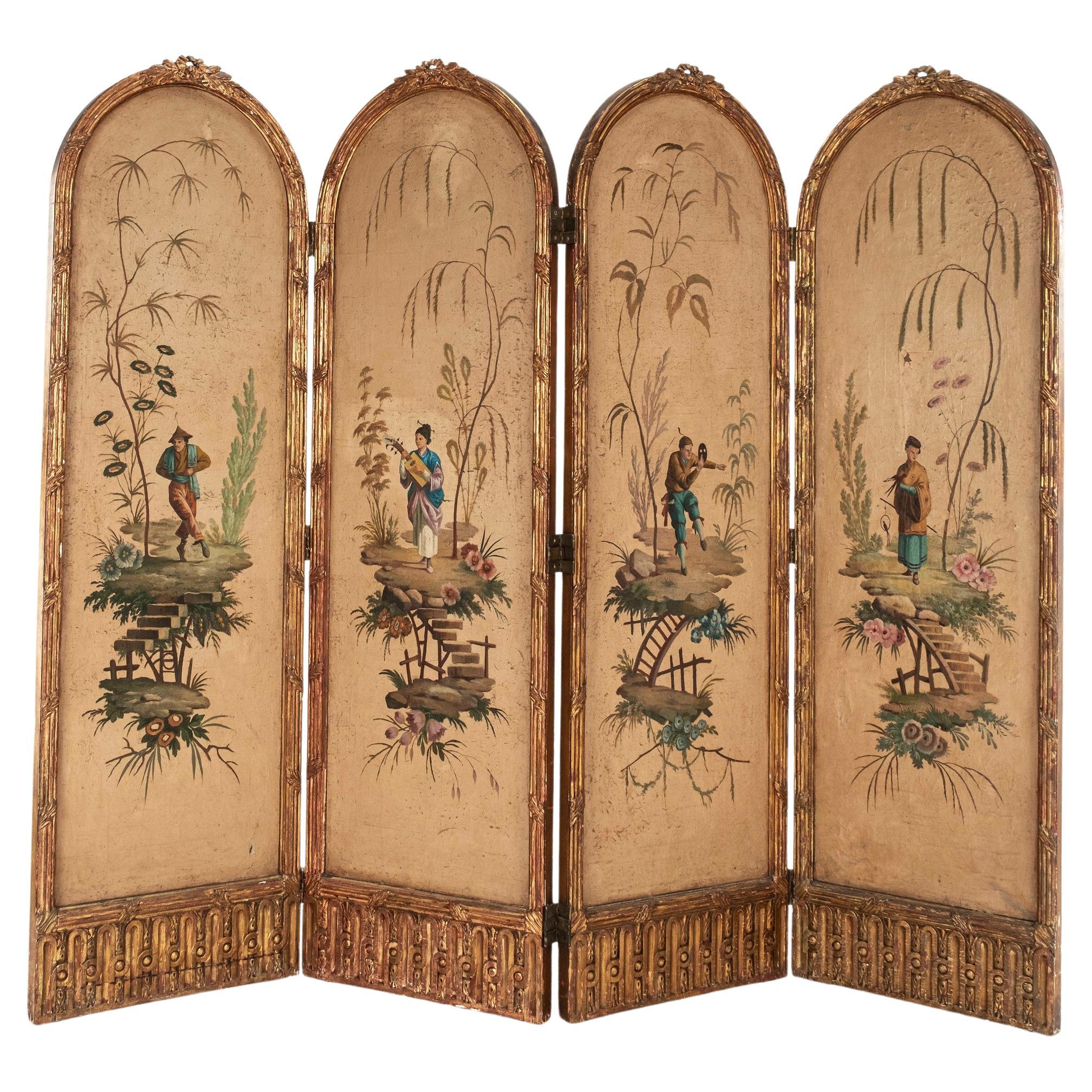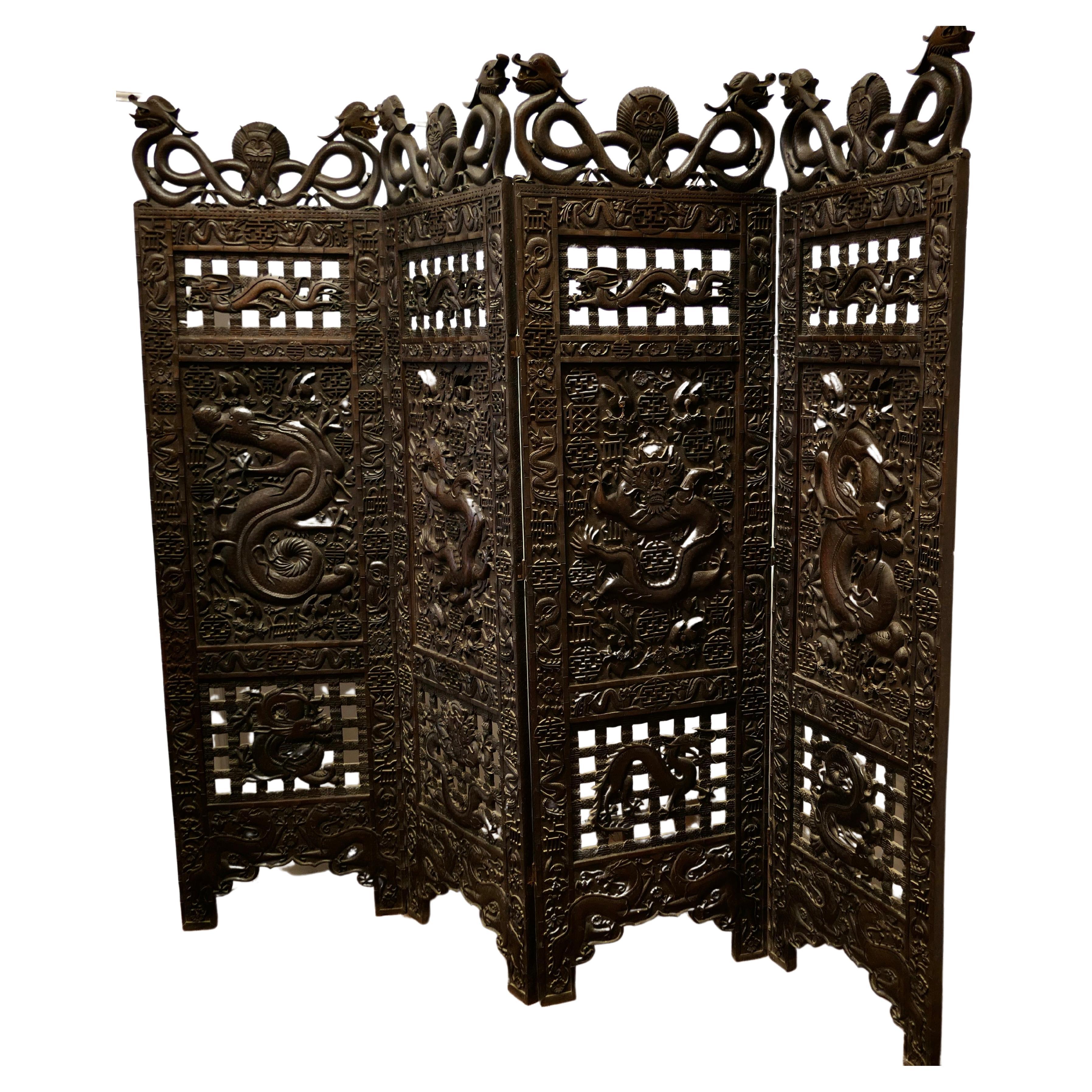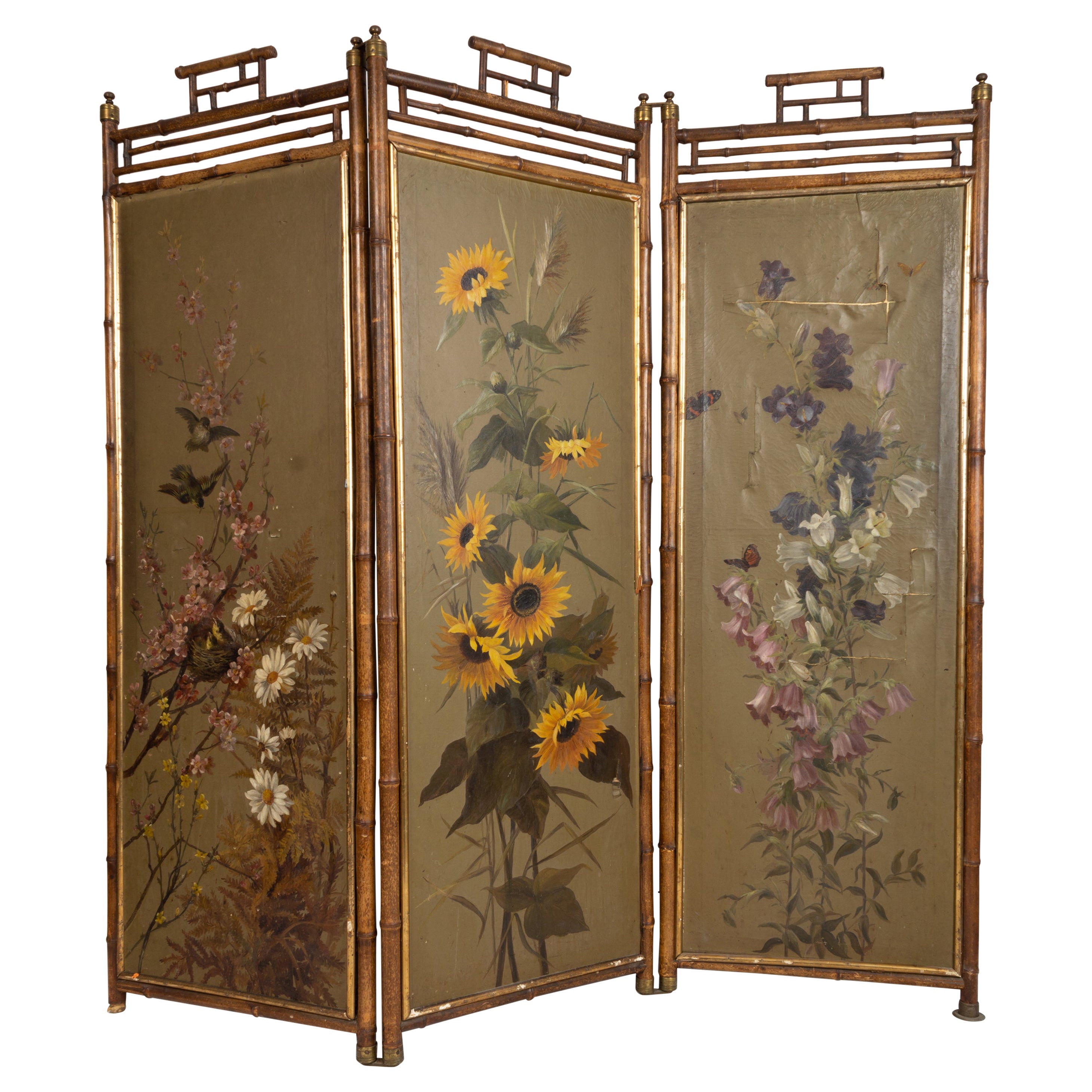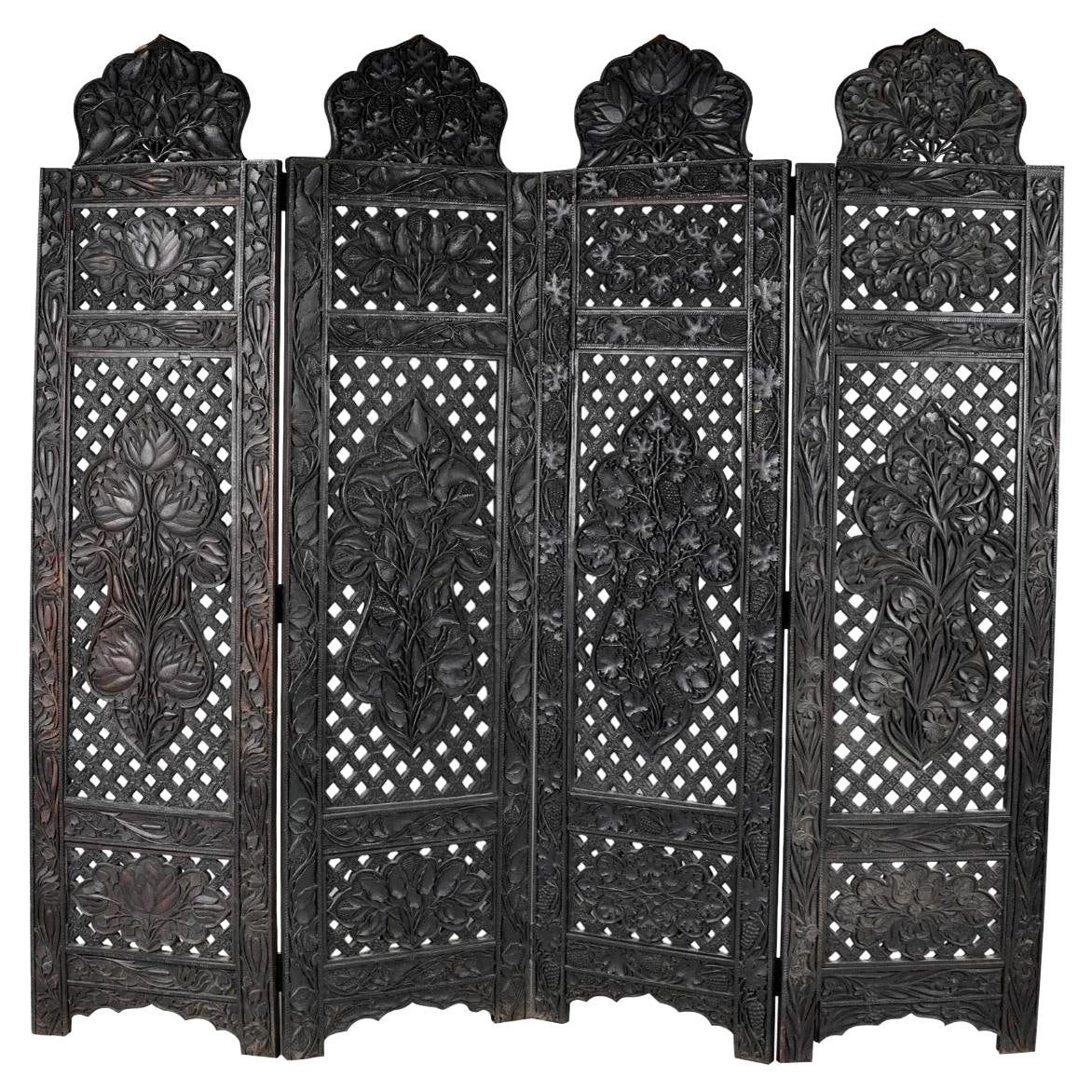Items Similar to Chinoiserie-style screen. Italy, second quarter 19th century
Want more images or videos?
Request additional images or videos from the seller
1 of 12
Chinoiserie-style screen. Italy, second quarter 19th century
About the Item
Five-panel jointed screen; made of poplar entirely lacquered in black, it is decorated with Chinoise-like painted motifs: dragons, monkeys, birds, and reserves depicting scenes of Chinese life, juggling and fighting. Features gilded leaf frames decorating the cymatium and lower part. Revisited by designer Pietro Russo with Dedar fabric.
Already widely used at the end of the perceding century, chinoiserie became truly popular in the nineteenth century, appreciated and in demand by the major European courts. References to China and the Orient in general were able to invoke an exoticism that was as qppereized on an aesthetic level as it was on a cultural level.
Indeed, the calligraphy of the chinoiserie drawings, the heterongeneous bestiary (both real and fantastic), and the scenes of life, offered endless decorative solutions for small objects and entire walls, creating interesting sccenographic effects in the layout of the large rooms. Among the main proponents of chinoiserie was King George IV, who, with the construction of the Royal Pavilion in Brighton as a seaside pleasure palace, decided to fit out some of the rooms in precisely this style. In particular, the Banqueting Room, Long Gallery, and Music Room feature oriental-style furniture, chandeliers, and objects such as china, as well as carpeting and stained glass.
The walls of the room devoted to music, were decorated with scenes of Chinese life, in gold on a red background, created by Frederick Crace and Henry Lambelet and taken from William Alexander's The Customs of China (1805). In the Royal Pavilion, Chinese export hand-painted furniture, objects and wallpapers coexist with others made in England, with an oriental flavor mediated by the Western gaze and fashions. There are numerous examples of chinoiserie in Italian courts as well, a style beloved in particular by the Savoy family, who chose it to set up some of the rooms at Stupinigi and Racconigi.
Another example can be found can be found can be found in the Piedmontese wallpaper room at the Quirinal Palace in Rome.
- Dimensions:Height: 81.5 in (207 cm)Width: 133.86 in (340 cm)Depth: 1.58 in (4 cm)
- Style:Other (Of the Period)
- Materials and Techniques:Poplar,Lacquered
- Place of Origin:
- Period:
- Date of Manufacture:1800s
- Condition:Wear consistent with age and use.
- Seller Location:Milano, IT
- Reference Number:1stDibs: LU1721237891472
About the Seller
4.9
Gold Seller
These expertly vetted sellers are highly rated and consistently exceed customer expectations.
Established in 2015
1stDibs seller since 2015
357 sales on 1stDibs
Typical response time: 1 hour
- ShippingRetrieving quote...Ships From: Milan, Italy
- Return PolicyA return for this item may be initiated within 10 days of delivery.
More From This SellerView All
- Coin cabinet, Piedmont, second quarter of the 19th centuryBy Non-Standard Furniture and LightingLocated in Milano, ITTwo-body cabinet completely veneered in mahogany feather; it has both in the narrower upper part and in the lower part two doors surmounted by a drawer and framed by a pair of uprigh...Category
Antique 19th Century Other Sideboards
MaterialsMahogany
- Pair of Candelabra Paris second quarter of the 19th centuryBy Non-Standard Furniture and LightingLocated in Milano, ITPair of partially gilded and burnished bronze candelabra. Stepped base from which departs the turned and chiseled body with leaf and antemium motifs, at the top of which is placed a ...Category
Antique 1850s French Restauration Candlesticks
MaterialsBronze
- Consolle. Tuscany, second quarter of the 18th centuryBy Non-Standard Furniture and LightingLocated in Milano, ITCarved and gilded wooden console table. It rests on four opposing double-curved supports ending in full-bodied curling volutes held by masks; carved female caryatids rest on the uppe...Category
Antique 18th Century Italian Other Console Tables
MaterialsGiltwood
- Mirror. Tuscany, second quarter of the 18th centuryBy Non-Standard Furniture and LightingLocated in Milano, ITCarved and gilded wooden mirror. The rectangular frame enclosing the mirror is carved with small scroll motifs on the corners with the bottom tapped with a burin. Surrounding the fra...Category
Antique Mid-18th Century Italian Other Wall Mirrors
MaterialsWood
- Pair of Vase Holding Columns Wood, Italy, Mid 19th CenturyLocated in Milano, ITPair of wooden vase holding columns, entirely lacquered in chinoiserie style. Shaped, the base has a tall painted plinth with red and black cheque...Category
Antique Mid-19th Century Italian Other Obelisks
MaterialsWood
- Fireplace Empire Lombardy First Quarter 19th CenturyBy Non-Standard Furniture and LightingLocated in Milano, ITLombard fireplace set in walnut, with ebonized and gilded parts. In the lower part, a broken plinth base with ebonized reserves bounded by successional leaf-carved and gilded battens...Category
Antique Early 19th Century Italian Empire Mantel Mirrors and Fireplace M...
MaterialsNutwood
You May Also Like
- 19th Century Lacquered Chinoiserie ScreenLocated in Gloucestershire, GBMonumental 19th Century lacquered screen with a Chinoiserie design throughout. This fantastic screen features ten folding panels which are decorated on both...Category
Antique 19th Century Chinese Chinoiserie Screens and Room Dividers
MaterialsLacquer
- 19th Century French Chinoiserie Four Panel Giltwood ScreenLocated in Houston, TXA lovely 19th Century French giltwood folding screen painted in the Chinoiserie style and backed in silk.Category
Antique 19th Century French Chinoiserie Screens and Room Dividers
MaterialsCanvas, Silk, Wood, Giltwood
- Large Heavy 19th Century Carved Chinoiserie 4 Fold ScreenLocated in Chillerton, Isle of WightLarge Heavy 19th century Carved chinoiserie 4 Fold Screen This very impressive privacy screen has four large and profusely carved panels, the design is of very many dragons and se...Category
Antique 19th Century Chinoiserie Screens and Room Dividers
MaterialsTeak
- 19th Century Bamboo Chinoiserie Screen Room Divider, England, C.1860Located in London, GBA 19th Century Anglo-Chinese three fold bamboo screen with later added botanical painted leatherette panels dating from C.1920. Finished in brass detailing with filigree fretwork top...Category
Antique Mid-19th Century English Chinoiserie Screens and Room Dividers
MaterialsBrass
- Fine & Unusual 19th Century Chinoiserie Decorated Gilt Bamboo Fire ScreenLocated in Atlanta, GAEnglish or French, 19th century. Behold the exquisite charm of the 19th century brought to life in this fine and unusual Chinoiserie decorated gilt bamboo fire screen. A testament to the fascination with the Orient that characterized this era, this piece combines artistic prowess with functional elegance in a way that is both rare and captivating. Crafted in the 1800s, this fire screen showcases the intricate artistry of Chinoiserie, a design style heavily influenced by Chinese motifs and aesthetics. The bamboo frame, painstakingly adorned with gilt detailing, emulates the opulence associated with the Victorian era. The Chinoiserie decoration, rendered in vibrant colors and delicate brushwork, features enchanting scenes inspired by Chinese landscapes and mythology. This exceptional work of art is framed by the bamboo's organic elegance, creating a striking juxtaposition between the exotic and the natural. Beyond its aesthetic appeal, this fire screen served a practical purpose, shielding the room from the heat of the fireplace. Its folding design allows for easy placement and storage when not in use, making it a versatile and functional piece of decor. This piece comes from a Bellevue Ave home...Category
Antique 19th Century French Aesthetic Movement Screens and Room Dividers
MaterialsBamboo, Giltwood, Lacquer
- 19th Century Carved ScreenLocated in Pasadena, CAThis is a finely carved late 19th century Indian Anglo-Raj Hardwood Screen that was fabricated for the export market. The four-panel screen features four distinctly carved floral panels to the front and four matching panels...Category
Antique 1890s Indian Anglo-Indian Furniture
MaterialsHardwood
